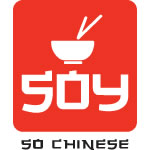Although COGM and COGS are both included in the product cost planning process, the main difference between these two is that COGS additionally involves other expenses regardless of manufacturing. Whilst COGM is about calculating material costs and production overhead; COGS includes cost of goods manufactured together with other costs such as sales, shipping or labor costs. COGM is the total cost of producing goods during a specific time period. This is all about the people who are hands-on in the production process.
Why is the COGM formula important?
This information is essential for companies to stay competitive in today’s marketplace. Direct labor cost is calculated by multiplying the total worked hours and the labor rate per hour. It is more simple to find it compared to direct materials; hours rates are generally fixed and with the information of how many hours are worked in total, http://flycenter.ru/forum/viewtopic.php?t=1844&p=6913 the direct labor cost is easily calculated.
- Knowing how to manage it allows companies to enhance their conditions and eventually make their business better.
- “Cost of products manufactured” or COGM is a term employed in managerial accounting.
- Investing in technology and automation can streamline production processes, reduce labor costs, and minimize errors.
- And as a result, the cost of goods made (COGM) is an important figure, particularly for manufacturing firms.
- He has a highly informative writing style that does not sacrifice readability.
- It encompasses material costs, labor costs, and manufacturing overhead, adjusted for the change in work-in-progress inventory.
Understanding Manufacturing Costs
With tech like AI and automation, tracking costs will become easier and more precise. Businesses that keep an eye on COGM will be better prepared for what’s coming next. They’ll be able to adapt quickly to changes in the market and stay ahead of the competition. Automation can take over the boring, repetitive tasks that folks usually mess up. Robots don’t need breaks or complain about overtime, so they can save you big bucks.
Step 2: Add Direct Labor Costs
Real-time data syncingSynder automatically syncs your financial data—sales, fees, refunds, and more—as transactions happen. Whether it’s Shopify or PayPal, Synder updates your accounting software instantly, giving you a clear view of your http://gukr.com/article924.html cash flow. Synder streamlines the process by automating financial data from all your sales channels, ensuring accurate COGS calculations.
- Yes, COGM can be higher than COGS if you produce more goods than you sell during a period.
- It refers to the expenses incurred on manufacturing a single piece of an item.
- Note that COGM is also known as the cost of goods produced or the cost of goods finished by some specialists.
- Manufacturing overhead refers to the indirect costs that a company incurs during production over a specific period.
This ensures https://sevsovet.com.ua/ru/2014/12/v-chem-prichina-padeniya-rynka-telereklamy/ every dollar is recorded accurately, making reconciliation fast and stress-free. Let’s break down how to calculate cost of goods manufactured step by step, using real-world examples to make it simple and actionable. Next step is to add the beginning work-in-progress inventory to the sum. So while COGM is not reported on the income statement, it is used to calculate COGS, which is included in the income statement.
Here are a few T-Accounts that display the inventory of finished goods. Products and services that have been fully finished and are prepared for sale to clients make up the inventory of finished goods. Don’t forget to take employee payment agreements and overtime expenses into consideration. Management can evaluate each component of the COGM formula when it is fully aware of what a company is generating. Note that COGM is also known as the cost of goods produced or the cost of goods finished by some specialists. Yes, COGM provides detailed cost insights, making it easier to create accurate budgets and forecasts.
The following exhibit shows where the cost of goods sold appears in the income statement. The COGM formula involves adding total manufacturing costs, less the cost of work-in-process inventory, plus any beginning work-in-process list, and subtracting ending work-in-process inventory amounts. The Cost Of Goods Manufactured (COGM) formula is a powerful tool to help managers analyze their company’s production costs. Businesses use COGM to measure the direct expenses of manufacturing goods and services.



















